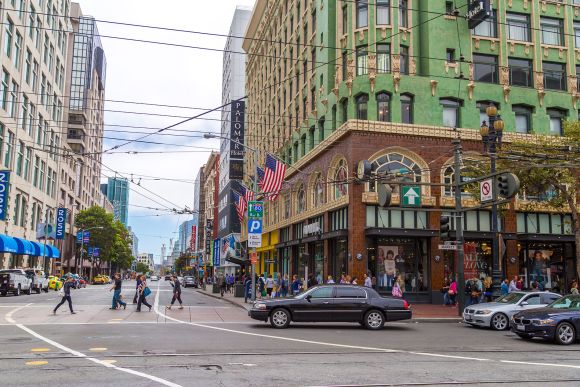Location analytics, also referred to as mobile analytics, is a buzzword making a splash in many industries, including the public sector. If you’ve explored customer intelligence or market research options for your community, economic development agency, or tourism agency in the last few years, you’ve probably heard vendors talk about this increasingly popular data source.
But what exactly is location analytics and how can it be applied in the public sector? Read on for answers to these and other top questions.
What is location analytics?
Location analytics uses aggregated and deidentified GPS signals from mobile devices to identify trends in visitor volumes, visit frequency, and even visitor characteristics for a selected study area. Different vendors use different terms to describe this type of data and analysis, such as foot traffic analysis, cell phone studies, mobile data analysis, mobile analytics, massive mobile data, etc.
How does it work?
Raw GPS signals alone aren’t reliable enough for analysis. Before turning the data into insights, your location analytics provider will cleanse and normalize the data. This is necessary to remove noise and fill gaps in the data. The goal is to provide not a complete, but a reliable sample set of data that’s suitable for analysis.
Once the data is ready, it’s time to begin analyzing! You specify the boundaries of the area (such as a concert venue, tourist attraction, shopping center, or downtown) and the time period(s) you want to study. This is called geofencing. Sophisticated programs will query the GPS database to search for any devices that were observed in that area during those timeframes.
Business rules are used to determine the devices’ likely home and/or work locations. Knowing these origin points makes it possible to append other datasets to the records, such as demographic and lifestyle data, to begin to paint a picture of the types of consumers visiting the study area.
What types of location analytics solutions are available?
Location analytics solutions come in three basic forms:
- Mobile datasets – You can purchase the GPS datasets directly from a data aggregator, but this approach isn’t practical for many local public sector agencies. The data still requires significant cleansing to be truly useful.
- Technology platforms – A second option for local governments is technology platforms that allow users to run their own reports using pre-cleansed GPS datasets.
- Custom studies – If you are trying to answer a complex question that can’t be answered using one of the DIY reporting platforms, or simply don’t have the staff resources to learn how to use a technology platform, then a custom study is another option.
What kinds of questions can be answered using location analytics?
Location analytics can be used to answer many questions for public sector entities. Here are just a few examples:
- Which brands are a strong fit for my community based on how my residents currently shop?
- Which type of consumers are visiting my community for daytrips? How does the profile of those consumers compare to the profile of overnight guests?
- Where do my visitors come from? What are the top origin markets?
- Is the visitor volume in my downtown rising or declining? Is there any seasonality in visitor patterns?
- What is the most common combination of places that out-of-town guests visit in our community?
- How far are my residents commuting to jobs in other towns?
- How does consumer activity in my community’s shopping district compare to consumer activity in a competing shopping district?
Are there any limitations to using location analytics?
Like any market research technique, there are limitations to what you can do with location analytics. For example, it can be difficult to differentiate between visitors to businesses on different floors of the same building and to get a clean sample set of data in highly dense urban areas. In very rural areas, the sample set of data may be too small to provide reliable insights. Still, this type of analysis has provided the public sector with the opportunity to answer many questions that were previously impossible.
The Bottom Line
Whether your goal is to attract more visitors, paint a more holistic picture of your consumer base to prospective businesses, or simply to keep a pulse on your local economy, location analytics can be an informative tool.
Interested in learning more? Explore Buxton’s Mobilytics application for on-demand location insights or contact us to learn about our custom study options.


